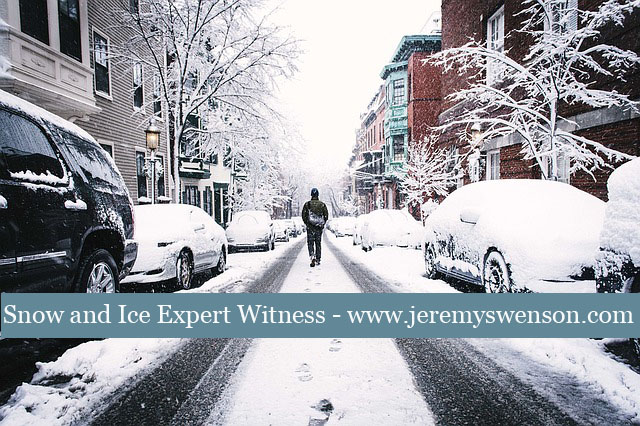BLOG NUMBER 19.77
Keeping walkways and other common areas ice-free and easy to traverse is often far more difficult than property owners expect. Many of the same applications that are used for expediting the melting of ice, sleet, and snow are incredibly corrosive. In addition to raising the melting point of frozen substances, rock salt gradually breaks down block paving, concrete pavers, and other stone and aggregate surfaces. Thus, although rock salt can be a very effective application in the short-term, it will likely undermine the safety and stability of the very surfaces it’s intended to safeguard. Worse still, the detrimental effects of rock salts can be further compounded if property owners or their snow removal companies routinely use metal shovels, picks, or other metal scraping and digging tools as part of their clearing efforts. So why is rock salt so commonly used in de-icing applications? The answer is quite simple.

Proper use and application of rock salt goes a long way towards maximizing its efficacy and minimizing the amount of damage that it causes. Rock salt is actually most effective when used as a preventative measure against icing, rather than a reactive one. Contrary to popular belief, rock salt doesn’t actually melt ice or snow accumulations. Instead, it mixes with various forms of precipitation to create a solution that has a significantly higher freezing point. As treated surfaces are exposed to additional hail, snow, or sleet, accumulations are far less likely to form, and less likely to freeze. Pre-treating walkways, pathways and other surfaces with rock salt limits the amount that must be used. Not only does this reduce exposure to corrosive materials, but it’s also proves better for local foliage, soils, and waterways. When new accumulations do occur, cleaning them off before applying new rock salt is important. This should only be done with durable plastic shovels, snow blowers with raise blades, or snow plows with plastic blades. Applying the right snow removal tools will prevent structural damages to surfaces that have been salt-treated for multiple seasons.
The Dangers of Improperly Applying Rock Salt
Improper application of rock salt invariably means that more salt must be used to achieve the desired effects. Reactive applications of rock salt to existing build-ups of ice and snow can actually make treated surfaces more slippery than if they’d never been treated all. Even gently scraping away ice accumulations will still leave a slick coating or sheath of ice that may not react optimally to rock salt.
Absent of any application of de-icing agents, concrete pavers and block paving have impressive freeze and thaw resistance. They can also be shoveled and plowed without substantial risk of structural damage. Moreover, certain block paver styles have chamfered or right-angle joints and edges that naturally promote snow and ice melt on their own. Applying calcium chloride or sodium chloride (rock salt) allows high-concentration saltwater to get trapped in any cracks and gaps that exist in block paving designs. When unsealed, block paving is also porous enough to absorb saltwater during various stages of freezing and thawing cycles. After the integrity of these surfaces have been undermined via the formation of pocks, gaps, and cracks, major trip and fall hazards will exist, even after slip and fall hazards have been properly mitigated.
There are several ways to keep block pavers protected while still maintaining a solid and effective de-icing program. In addition to pre-treating these surfaces rather than taking a reactive approach to snow and ice removal, property owners can alternatively use de-icing agents that have calcium magnesium acetate as their active ingredient rather than sodium. In fact, when block paving is initially installed, this alternative de-icing agent is often recommended by installers. In areas where feasible and deemed cost-effective, electric, under-paver snow-melting systems can both prevent paver damage and eliminate the risk of wintertime slip and fall injuries. To learn more about the safest and most effective strategies for keeping common areas on your property hazard-free during the winter months, or to consult with a seasoned snow removal expert witness, call us today at (816) 564-9131.
DISCLAIMER: Information contained in this Website and blog is intended for informational purposes only and do not necessarily reflect the direct opinions, views or practices of Swenson Consulting or its consultants. The individuals who maintain this blog work for Swenson Consulting. The information, comments and links posted on this blog do not constitute legal advice. No attorney-client relationship has been or will be formed by any communication(s) to, from or with the blog and/or the blogger. All decisions relating to the content of the website blog belong to the blogger and management company responsible for the blog for the purpose of aggregating relative industry specific information related to snow removal.
